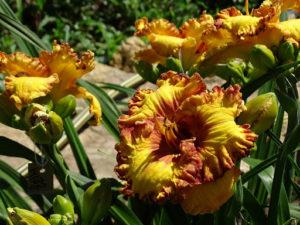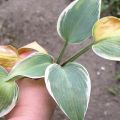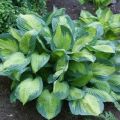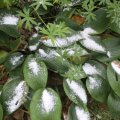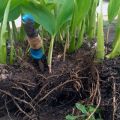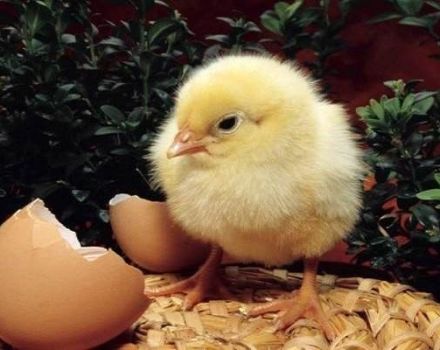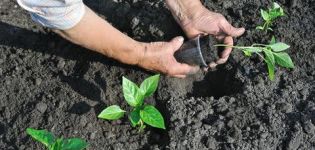Reproduction of hosts by dividing a bush or seeds, how and when to carry out the procedure
Hosta is a perennial plant that belongs to the asparagus family. These are bushes that are formed by basal leaves. The flowers of this plant resemble lilies. Reproduction of hosts can take place by sowing seeds, dividing roots or planting cuttings.
The host plant is popular among gardeners for its unpretentiousness and decorativeness.
Optimal timing
The beginning of April is a good time for planting seeds. When propagating by cuttings or cuttings, the hosts can be planted from May to July. The division can also be done at the end of summer.
Training
It is necessary to prepare the planting material and the place where the host will need to germinate at first. For seeds, it is necessary to stratify for 4 months. If they are sown in late autumn, this will happen during the winter period. As a result, weak seeds will die, and the most viable ones will give birth.
How the host reproduces
In order to propagate the hosta, seeds, cuttings, or the separation of part of the root can be used. The latter method is well tolerated by plants that are already 4 years old. If they are younger, then as a result of this action, the growth of the hosts may slow down.
Seeds
This method of breeding hosts is the most time consuming. It is usually used by breeders. The seeds of this plant have poor germination (no more than 70%). You can use stimulants to increase it.
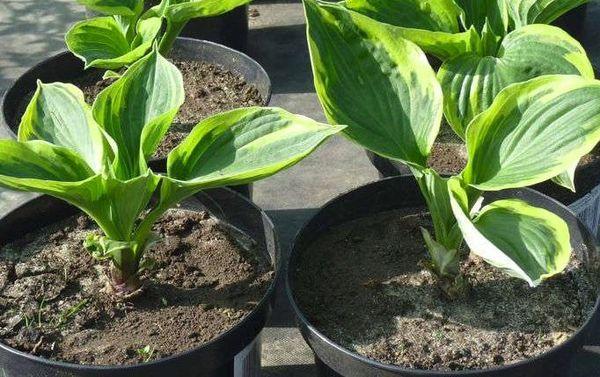
With this method of reproduction, the hosta acquires a decorative appearance in the fourth year.
Seed growing is effective when new varieties are being developed.
If the seeds sprout, the hosts will be healthy, hardy and resistant to difficult weather conditions.
Selection and preparation of planting material
Planting material - oblong dark brown seeds. In the place where the faded flowers are located, yellow boxes are formed. Planting material can be obtained from them.
The seed pods form 6-7 weeks after pollination has occurred. Usually this moment comes at the very end of the summer period or at the beginning of autumn. When the pod starts to open, this is the time to collect the seeds.
This can be done until the box is completely dry and begins to rot. The duration of the period of time during which the planting material is harvested is no more than 5 days.
Then the hosta seeds need to be dried well. It is recommended to provide a high temperature for this. Complete evaporation of moisture from the seed will occur within 10 minutes. This completes the drying procedure.
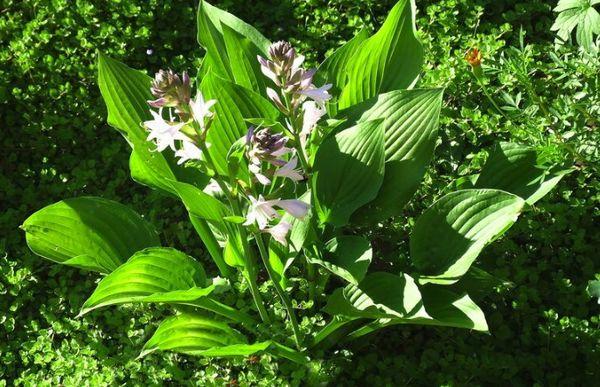
After that, remove the lionfish and put the seed in the refrigerator for a month. Before planting, they are treated with growth stimulants. For this purpose, you can use Epin, Zircon.
How to plant at home
To germinate hosta seeds, you need to place them in a plastic container with soil. It should have holes at the bottom.
The container must be treated with boiling water, then wiped with alcohol.
It is important to use sterile soil. To do this, you can purchase it in a specialized store. If you use self-collected soil, you need to add potassium permanganate crystals, peat and perlite there. Drainage is poured at the bottom, moist earth is placed on top.
The earth must be compacted with a wooden plank. The seeds need to be planted to a depth of 6-7 mm. A small amount of perlite is poured on top and then the soil is compacted. This is done to improve seed germination.
The container is covered with foil from above.
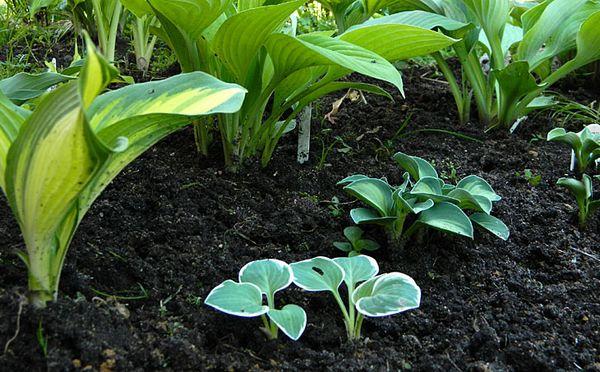
Growing
When growing, they provide a temperature of 20 degrees Celsius. Shoots should appear in two weeks.
It is important that the sprouts are not exposed to direct sunlight. To do this, use a film, it must be removed during the day for two hours.
When the first leaf appears, the sprout is transplanted into a separate container. At the same time, the soil in the new container should be more sterile and nutritious than the old one. A thin layer of sand is poured on top. In a new container, the plant is not covered with foil.
Watering must be done very carefully. For this, water is poured into a tray in which there is a container with a sprout. Water stagnation should not be allowed. In order to accustom the hosta sprouts to the temperature conditions of the open ground, they are periodically taken out into the street and kept there. At first, the time is limited to a quarter of an hour, and then it must be gradually increased.
Landing in the soil is done provided that the air temperature is 20 degrees or more. The soil of the seedlings is moistened, the roots, together with the earth, are carefully removed and transplanted into open ground. Then they add earth and lightly tamp.
By cuttings
With this method of reproduction, the new sprout will have the properties of its parent. This will also be true when breeding hybrid varieties.
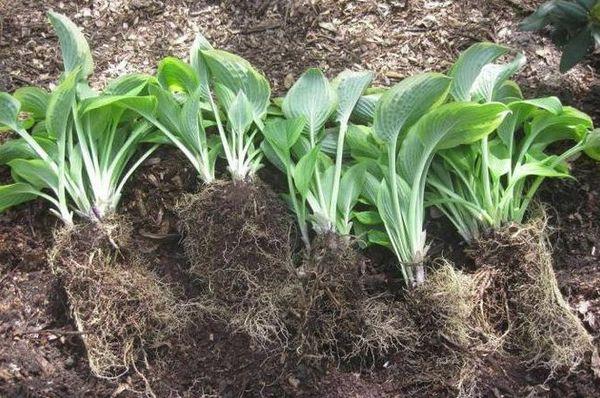
In order to increase the survival rate of the hosts, it is necessary to carefully separate the heel during the formation of cuttings.
Timing
Cuttings are carried out over a long period - from the end of spring to mid-summer. During the first days after they are planted in the soil, the cuttings will hurt. If you take care of them properly, they will take root.
How to cut and plant
For this procedure, shoots with a distinct heel are preferred. It is important that they can be easily separated. It is necessary to choose shoots where the leaves have small petioles, and they themselves are relatively small in size.
It is important to water the cuttings regularly until they are fully rooted. In the first few days they may look lethargic and weak, but later they will harden and start growing.
By dividing the bush
This method of breeding hosts is the most popular. It does not require significant effort. You need to divide when the plant has grown strongly. When the hosta is already ten years old and the center of the plant is no longer growing, in this case it is worth dividing the bush.
When is the best time to share
The best time for reproduction by division is spring or summer. However, this can also be done in the fall, but no later than 30 days before the first frost. It is necessary to give the dealers time to start settling in a new place.
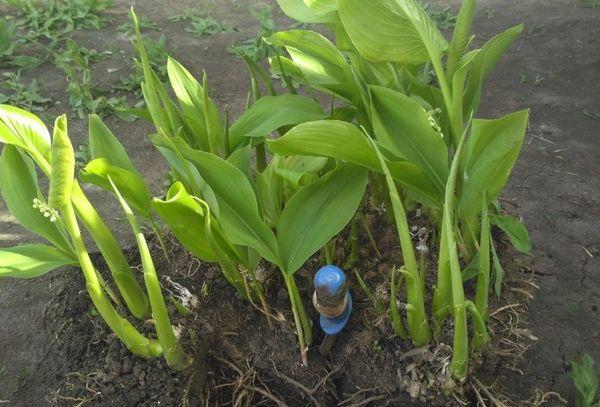
How to divide correctly
The amount of available planting material depends on how much the bush has grown. If the plants are located relatively far from each other, then their roots grow well and several viable parts can be separated from one plant.
Optimal term selection
The division is usually carried out 4-5 years after planting. This is done in order for the plant to develop well and take root. This is done in the spring or in the first part of September. If you propagate younger plants in this way, this can have a bad effect on their development.
Using the right tool
With a sharp knife, it is necessary to separate the rosette of leaves along with a part of the root. The incision site is treated with sand. This will help the plant to heal the resulting wound. The sharper the instrument, the less damage the mother bush will be.
How to dig or cut
This can be done in some cases without digging out the main part of the root. However, it is better to completely dig the root of the mother plant from the ground and divide it into several parts so that each of them has 2 or more rosettes of leaves.
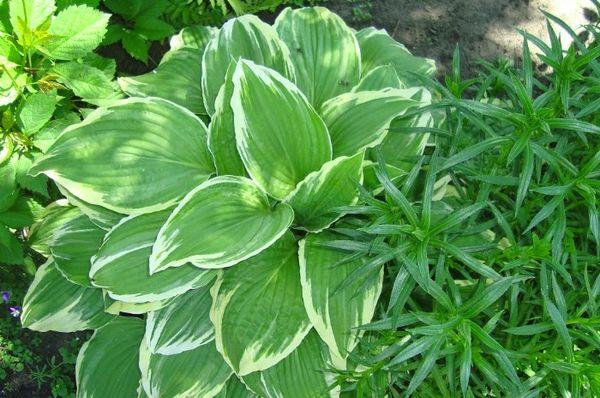
Sometimes you need not the maximum number of divisions, but a small number of large ones.
The roots are planted in a greenhouse or in a shady place under a plastic bottle. In 3-4 weeks, the bushes will begin to stretch. They are watered abundantly. Every day, allow to breathe the surrounding air, removing the film or bottle. When the bushes grow, they are transplanted to a permanent place.
Tips and Warnings
The material obtained by dividing the hosta bushes must be planted to the same depth at which the root of the mother bush was. In this case, the distance between individual plants should be at least 30-35 cm.
When planting cuttings in the ground, it is undesirable for the leaves to be large.
In this case, moisture will evaporate from them too much. To prevent this, the largest leaves are cut by one third.
When planting in open ground, it is recommended to add mulch to the top layer. For this, you can, for example, use crushed bark.
